Accelerate Productivity in 2025
Reignite Growth Despite the Global Slowdown
According to the World Health Organization (WHO), outdoor air pollution is estimated to cause 4,2 million premature deaths worldwide each year. Air quality is an increasingly important issue, especially after the worldwide pandemic, and requires efficient disinfection measures. Advances in technologies deliver innovative solutions to better monitor, manage, and improve the air quality index (AQI). This research provides an overview of the top 10 air quality management trends in 2023. They range from artificial intelligence (AI) and air quality analytics to purifying robots and green building solutions. Read more to explore the latest developments in air quality management and how they impact your business.
Innovation Map outlines the Top 10 Air Quality Management Trends & 20 Promising Startups
For this in-depth research on the Top 10 Trends & Startups, we analyzed a sample of 1 323 global startups & scaleups. The result of this research is data-driven innovation intelligence that improves strategic decision-making by giving you an overview of emerging technologies & startups in the Smart City industry. These insights are derived by working with our Big Data & Artificial Intelligence-powered StartUs Insights Discovery Platform, covering 3 790 000+ startups & scaleups globally. As the world’s largest resource for data on emerging companies, the SaaS platform enables you to identify relevant startups, emerging technologies & future industry trends quickly & exhaustively.
In the Innovation Map below, you get an overview of the Top 10 Air Quality Management Trends & Innovations that impact 1 323 companies worldwide. Moreover, the Air Quality Management Innovation Map reveals 20 hand-picked startups, all working on emerging technologies that advance their field.
Top 10 Air Quality Management Trends
- Artificial Intelligence
- Air Quality Analytics
- Air Disinfection
- Air Purification
- Internet of Things
- Air Quality Monitoring Devices
- Green Building
- Robotics
- Clean Energy
- Advanced Materials
Tree Map reveals the Impact of the Top 10 Air Quality Management Trends
Based on the Air Quality Management Innovation Map, the Tree Map below illustrates the impact of the Top 10 Air Quality Management Trends in 2023. Startups and scaleups are developing AI and air quality analytics solutions to gather comprehensive data for pollution anticipation. Air disinfection and purification are the next important trends that deliver strong methods to remove harmful pathogens in the air. Meanwhile, the internet of things (IoT) and air quality monitoring devices improve pollution data acquisition whereas robots automate air disinfection and purification. Further, green building strategies rethink residential and corporate spaces to enable better air quality through living walls, roofs, and facades. The adoption of clean energy sources, like carbon capture, contributes to reduced greenhouse gas emissions. Lastly, advanced materials replace toxic components in emulsions, paints, and coatings to minimize human exposure to harmful substances.
Global Startup Heat Map covers 1 323 Air Quality Management Startups & Scaleups
The Global Startup Heat Map below highlights the global distribution of the 1 323 exemplary startups & scaleups that we analyzed for this research. Created through the StartUs Insights Discovery Platform, the Heat Map reveals high startup activity in Europe and the US, followed by India.
Below, you get to meet 20 out of these 1 323 promising startups & scaleups as well as the solutions they develop. These 20 startups are hand-picked based on criteria such as founding year, location, funding raised, & more. Depending on your specific needs, your top picks might look entirely different.
Top 10 Air Quality Management Trends in 2023
1. Artificial Intelligence
While satellite instruments provide global coverage for air quality monitoring, they have limitations in terms of frequency and measurement precision. To address this, startups are implementing AI to supplement data from traditional stations. Machine learning (ML)-based predictive modeling forecasts air pollution while AI-powered sensors and cameras detect air pollution in real-time. This controls and optimizes the operation of air control systems to save energy consumption, including those in power plants and factories. Besides, AI chatbots increase public awareness of air quality by offering ways to reduce exposure to pollutants. Overall, AI improves the accuracy and effectiveness of air quality management, helping authorities and organizations better protect public health.
Fybra advances AI-driven Air Optimization
Italian startup Fybra improves indoor air quality. Its patented technology combines sensors and AI to recognize contaminant patterns and optimize air changes. The AI models also adapt ventilation streams according to personalized geographic locations to enhance microdroplets dispersion. This way, the startup delivers enhanced protection against COVID-19. Additionally, Fybra’s technology signals customers with color-coded lighting to open or close windows to maintain air quality while reducing energy costs. This approach prevents the deterioration of air quality while decreasing energy costs for residential, educational, and business settings.
AirStat simplifies Indoor Air Quality (IAQ) Forecasting
US-based startup AirStat builds an AI-powered platform to anticipate indoor air quality. It leverages machine learning and cloud computing to gather data from IoT actuators connected to existing heating, ventilation, and air conditioning (HVAC) and IAQ infrastructure. Then, the startup’s companion app identifies energy-saving practices based on user feedback. The platform also detects IAQ patterns to automatically adjust the environment to achieve optimal settings, improve equipment efficiency, and reduce energy use. This way, AirStat ensures high air quality but and improves worker wellness and productivity.
2. Air Quality Analytics
The lack of precise and real-time measurements hinders the implementation of proper measures to reduce air pollution. By using big data, startups collect and label large amounts of data from various sources. Meanwhile, analytics tools analyze this historical data to identify patterns and trends in air quality changes. This allows the recognition of the pollution sources, thus leading to more effective mitigation efforts. For instance, big data guides urban planning initiatives to build new schools or hospitals in less polluted areas. This enables governments to design energy-efficient and healthy infrastructures, improving the overall well-being of citizens.
Sparrow aids Air Pollution Data Acquisition
Swiss startup Sparrow builds a network of mobile sensors that gather environmental data on air pollution. Its methodology allows the installation of its device, Sparrow Node, on public transportation or municipal vehicles. By linking its GPS position and measurement timestamp, the startup creates a highly accurate air pollution map. Based on real-time and historical data, Sparrow then identifies areas with high levels of greenhouse and toxic gases. This information assists governments, environmental organizations, and city authorities in monitoring pollution patterns, pinpointing sources, and creating effective policies.
4EI offers Air Quality Modeling
UK-based startup 4EI accurately models and maps pollutant fluctuations by using satellite-derived images. Unlike traditional models, 4EI’s approach takes into account air quality data from moving vehicles to create a more accurate accounting. The startup’s models also incorporate factors such as vehicle speed, direction, and engine running time. It then uses deep-learning algorithms to detect, count, and classify vehicles. This allows 4EI to assist both commercial and government sectors in making more informed decisions to protect public health.
3. Air Disinfection
Since people spend the majority of their time in closed spaces, indoor air pollution poses a great risk to human health. The COVID-19 pandemic has further increased the demand for air disinfection methods. Air disinfection solutions improve air quality by eliminating harmful microorganisms such as bacteria and viruses. Startups develop novel technologies, including ultraviolet (UV-C) lighting, hydrogen peroxide vapor, hot air sterilization, and cold plasma, to kill viruses. They neutralize microorganisms to disinfect surfaces and hard-to-reach areas, which is highly important for hospitals, schools, and public transportation.
SpaceUV enables UV Air Disinfection
Indian startup SpaceUV leverages UV disinfection to disinfect airborne pathogens emitted in low ventilation spaces. The startup utilizes upper-room ultraviolet germicidal irradiation (UVGI) technology to distribute UV-C light through the upper portion of the room. This provides a very high degree of protection against person-to-person aerosol transmissions. The UVGI technology rapidly destroys the DNA or RNA of pathogens, making it an efficient workplace solution to protect against cross-infections. Moreover, SpaceUV’s solution does not require expensive HVAC upgrades, making them a cost-effective solution.
MyAirShield makes Portable Disinfectants
MyAirShield, a startup from Luxembourg, produces portable air disinfectants against pathogens. The startup’s patented pearls provide up to 90 days of active air purification. They disinfect and sanitize breathing spaces by spreading a low-concentrated, solid form of chlorine dioxide (ClO2). The pearls release a safe amount of disinfectant when activated through a reaction with air humidity. ClO2 kills microorganisms by penetrating the cell walls of pathogens. As a result, the startup delivers clinically-tested personal air sanitizers to improve personal hygiene.
4. Air Purification
Indoor air contains dangerous pollutants, like volatile organic compounds (VOCs) and particulate matter (PM), which have adverse health effects. Constant exposure to such pollutants leads to cardiovascular diseases, allergies, neurological problems, and even cancer. Therefore, effective air purification devices trap the pollutants via high-efficiency particulate absorbing (HEPA) filters, electrostatic precipitation, carbon filters, photo-catalytic oxidation, hybrid ionizers, etc. Further, technological advances include smart sensors, novel filter materials, nanotechnology, and purifying systems running on renewable energy. This results in clean indoor air, improving the comfort and quality of life of the people indoors.
Neoplants cultivates Anti-pollution Bioengineered Plants
French startup Neoplants offers bioengineered plants that fight air pollution. Carcinogenic molecules found in furnishings, textiles, and cleaning products significantly pollute indoor air. To resolve this, the startup’s plant, Neo P1, turns VOCs into useful metabolites. The startup also leverages transgenesis to integrate metabolism engineering in the plant cells that turn pollutants into plant matter. As a result, Neoplants’ bioengineered plants purify the air and recycle the pollutants into valuable water, sugars, amino acids, and oxygen.
Puraclenz offers Photocatalytic Oxidation (PCO)
US-based startup Puraclenz uses an evolved form of photocatalytic oxidation to improve air purification. The startup’s patented technology enables UV lamps and catalyst cells with a high density of ozone-free ions to deactivate pollutants without harmful chemicals. It delivers ions via air to remove viruses, bacteria, mold, and other pathogens from hard-to-reach areas overlooked by regular filters. This results in effective air purification with low energy consumption, making it valuable for a variety of indoor spaces such as fitness centers, hotels, and schools.
5. Internet of Things
Inadequate data, lack of geographical coverage, and inefficiency of pollution data sources are some of the problems hindering air quality improvement. To resolve them, startups are adopting IoT devices that provide real-time and comprehensive data on air pollutants. By placing IoT devices in different locations, these novel solutions fill gaps in traditional monitoring methods. With IoT-driven, it is also possible to track and analyze air quality trends and pinpoint the sources of pollutants. This aids governments in implementing better protection measures cost and time effectively.
Viliso Technologies delivers IoT-based Air Quality Monitoring
Indian startup Viliso Technologies provides IoT-powered monitoring devices to control air hygiene. The startup makes a health hygiene monitor (HMM) device that detects harmful gases and PM. It provides real-time tracking of air quality data, which users visualize using mobile and web applications. Further, the startup’s cloud architecture supports the HMM ecosystem, making it available across platforms. This way, its IoT-powered device allows governments to improve visibility into harmful gas hotspots and better manage environmental challenges.
4Nature System makes IoT-powered Vertical Gardens
Polish startup 4Nature System offers IoT-connected vertical gardens with automatic irrigation and control. The startup’s proprietary IoT technology connects individual modules of live plants through a system of tubes and drippers. It features automated plant watering and lightning for reduced water and energy consumption. Further, the technology’s modular design allows flexible arrangements of plants to cover various surfaces. These IoT-connected vertical gardens thus improve air quality and promote sustainability in corporate workspaces.

6. Air Quality Monitoring Devices
Due to the quantity and complexity of gases in the air, startups are developing advanced air quality monitoring devices. They include sensors based on quantum effects, electrochemical reactions, infrared (IR) technology, and atmospheric parameters. Their benefits include higher accuracy, sensitivity, and non-intrusive nature, eliminating contact with samples. Further, novel approaches enable portable and wearable sensors that monitor personal exposure to air pollutants. As a result, air quality monitoring devices enable authorities and scientists with more precise measurements gathered at lower prices.
MIRO Analytical builds Quantum Cascade Sensors
Swiss startup MIRO Analytical combines quantum sensors and direct laser absorption spectroscopy to offer multi-compound gas analyzers (MGA). While most monitoring stations measure a limited number of gases, quantum cascade sensors detect multiple compounds. The use of direct laser absorption technology in the startup’s instruments makes them highly sensitive to small changes in air particles. This data allows authorities to make more informed environmental management decisions.
Perfect Sense AQ produces Graphene Badge Sensors
UK-based startup Perfect Sense AQ develops a pollution-sensing pin badge using satellite systems and graphene. The badge utilizes a global navigation satellite system (GNSS) to achieve hyperlocal accuracy within 20 cm. The startup uses graphene to create a small, portable sensor that detects pollution hotspots by measuring nitrogen oxides. Its companion mobile app also analyzes the data collected to gain a deeper understanding of pollution hotspots. By providing pinpoint precise measurements, the air quality pin badge helps protect public health and aids policymakers in making informed decisions.
7. Green Building
The design and construction of buildings play a crucial role in the flow of indoor and outdoor air. Green building solutions emphasize energy efficiency and smart control to improve air quality by implementing sustainable building techniques. They include improved ventilation systems, increased natural light, renewable energy sources, and eco-friendly insulation materials. These strategies bring in the fresh air, decrease the presence of VOCs, lower carbon emissions, and reduce exposure to chemicals. Additionally, green roofs and walls absorb pollutants while providing natural oxygen. Implementing green building technology thus leads to cost savings, improved health and well-being of residents, and increased productivity.
Incube delivers Predictive Building Intelligence
UK-based startup Incube Space provides CubeOS, a predictive intelligence platform that consolidates building data. It connects building management systems (BMS), HVAC, and IoT sensors in one central dashboard. The platform also features a rule-based engine to derive predictive insights for customizable IAQ. As a result, the CubeOS continuously ensures optimal IAQ and thermal control, reducing energy waste and carbon footprint for landlords, tenants, and retail stores.
Epiclay creates Living Green Walls
Austrian startup Epiclay develops living green walls for outdoor facades and indoor areas. Air pollution leads to numerous diseases, damaging physical health and mental well-being. Therefore, Epiclay creates lightweight walls with plants that absorb harmful carbon emissions and reduce heat. The solution’s modularity allows flexibility with installation, thus lowering maintenance costs. Moreover, the use of bio-receptive natural materials enables disposal without environmental harm. By sustaining a green environment, Epiclay’s solution combats air pollutants as well as reduces human stress and anxiety.
8. Robotics
The COVID-19 pandemic has pushed businesses to implement more automated solutions, which assist with cleaning, sterilization, and maintenance in indoor facilities. Such solutions include remotely controlled robots equipped with UV-C light. These machines are well-suited for dangerous and tedious tasks to decontaminate air pollution. Robots also automate data sampling by monitoring outdoor hard-to-reach spaces, high-traffic areas, and city centers. For instance, startups develop drones with sensors and cameras to survey large areas. Moreover, some robots remove microplastics that adversely affect respiratory systems. This way, robotization presents a low-cost, safe, and highly effective means for policymakers to combat air quality problems.
Regency Robotics delivers Robotic UV Disinfection (UVD)
Canadian startup Regency Robotics develops advanced robotic ultraviolet disinfection. The startup’s robot applies concentrated UV-C light to disinfect surfaces and the air from bacteria and viruses. It also maneuvers automatically to predefined positions, ensuring reliable disinfection without shadows or errors. To make sure that the robot can navigate around obstacles, it is equipped with laser scanners and 3D cameras. The robot also creates heat and exposure maps to assist operators in improving the disinfection process. This way, Regency Robotics enables industries such as healthcare, automotive, and hospitality to save time and money on disinfection.
STERISAFE builds Air Cleaning Robots
STERISAFE, a startup from Denmark, designs robots with full-depth disinfection cycle (FDCC) technology for autonomous air cleaning. The startup’s robot, STERISAFE PRO, applies FDCC to sterilize air and surfaces by diffusing a biocide gas of atomized water and ozone. The gaseous treatment by FDCC reaches harmful pathogens such as viruses, bacteria, and superbugs. Moreover, it reverses the process by converting residual oxidants back into pure oxygen. This results in a whole-room sterilization solution that is both effective and safe for healthcare, maritime, veterinary, and food industry applications.
9. Clean Energy
Clean energy technologies, such as solar and wind power, help reduce air pollution by replacing traditional fossil fuels. Solar farms, wind turbines, agricultural biomass, and electric vehicles (EVs) make industries less oil-dependent, thus improving air quality. Further, startups develop direct air capture (DAC) and carbon sequestration solutions to reduce emissions of sulfur dioxide, nitrogen oxides, and PMs. Biomimetic designs also reduce air pollution. Overall, clean energy sources reduce pollutants and empower citizens and governments with cost-effective and stable energy sources.
RainIons applies Biomimicry for Air Pollution
RainIons, a startup from Hong Kong, mimics precipitation to remove air pollutants. Its patented biomimicry technology combines tourmaline, sunlight, and water to generate negative ions, neutralizing and decomposing pollutants. Meanwhile, precipitation captures and removes pollutants by using pyroelectric and piezoelectric materials using the Lenard Effect. As a result, RainIons enables automotive, heavy transportation, and machinery stakeholders to combat air pollution cost-effectively and with lower risks.
Feather Fuels advances Carbon Capture
US-based startup Feather Fuels removes carbon dioxide from the atmosphere and recycles it into a circular carbon-neutral jet fuel. The startup’s technology applies DAC and electrolysis to convert CO2 into kerosene and other types of hydrocarbons. Besides, the entire process is powered by renewable energy sources, including solar, hydro, and waste-to-energy (WTE). By using carbon capture, Feather Fuels decarbonizes long-distance air travel and improves air quality, significantly reducing expenses on fuel import.
10. Advanced Materials
The presence of pollutants, fumes, and toxic chemicals in paints, coatings, and emulsions contributes to poor air quality. By inhaling them, children and elders develop respiratory irritation and aggravate asthma. To resolve that, startups replace traditional chemicals with advanced materials. They include graphene, carbon nanotubes, and bio-based paints and emulsions. Such materials make spaces safe to inhabit. Further, various nanocoatings enable photocatalytic, self-cleaning, anti-fogging, and antimicrobial properties. They prevent surfaces from growing harmful microorganisms like mold, bacteria, and VOCs.
Silvis produces Bio-based Emulsions
US-based startup Silvis creates bio-based emulsions to replace traditional petroleum-based materials in industrial coatings, adhesives, binders, and paints. Petroleum-heavy materials emit toxic VOCs that negatively impact indoor air quality. Silvis’ biodegradable cellulose emulsions provide a sustainable packaging solution, moving away from the use of petroleum-derived materials in production. This helps the manufacturing industry to achieve sustainability goals and improves air quality at a reduced cost.
Raze provides Cleaning Nano Coating
Raze is a Hong Kong-based startup that offers patented nanomaterials to eliminate indoor air pollution. Its long-lasting and microscopic cleaning solution utilizes a nano photocatalyst to protect surfaces and destroy bacteria, VOCs, and other odor-causing substances. The startup’s products do not use chemically toxic components, making them safe to use for children and pets. Moreover, they preserve the quality and appearance of surfaces without marks or stains. This results in self-disinfecting coating beneficial for public areas and corporate spaces.
Discover all Air Quality Management Trends, Technologies & Startups
Novel air quality management solutions help to accurately pinpoint sources of pollution, monitor air quality in real-time, as well as optimize traffic flow and urban planning. Further, technological advances such as carbon capture, smart sensors, plant-based air purification, and biomimetics significantly reduce air pollutants. This also improves the adoption of mitigation measures, making them cost-effective, sustainable, and productive to protect public health and the environment.
The Air Quality Management Trends & Startups outlined in this report only scratch the surface of trends that we identified during our data-driven innovation & startup scouting process. Among others, real-time monitoring, alternative materials, and automation will transform the sector as we know it today. Identifying new opportunities & emerging technologies to implement into your business goes a long way in gaining a competitive advantage. Get in touch to easily & exhaustively scout startups, technologies & trends that matter to you!
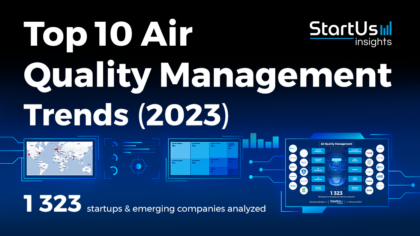
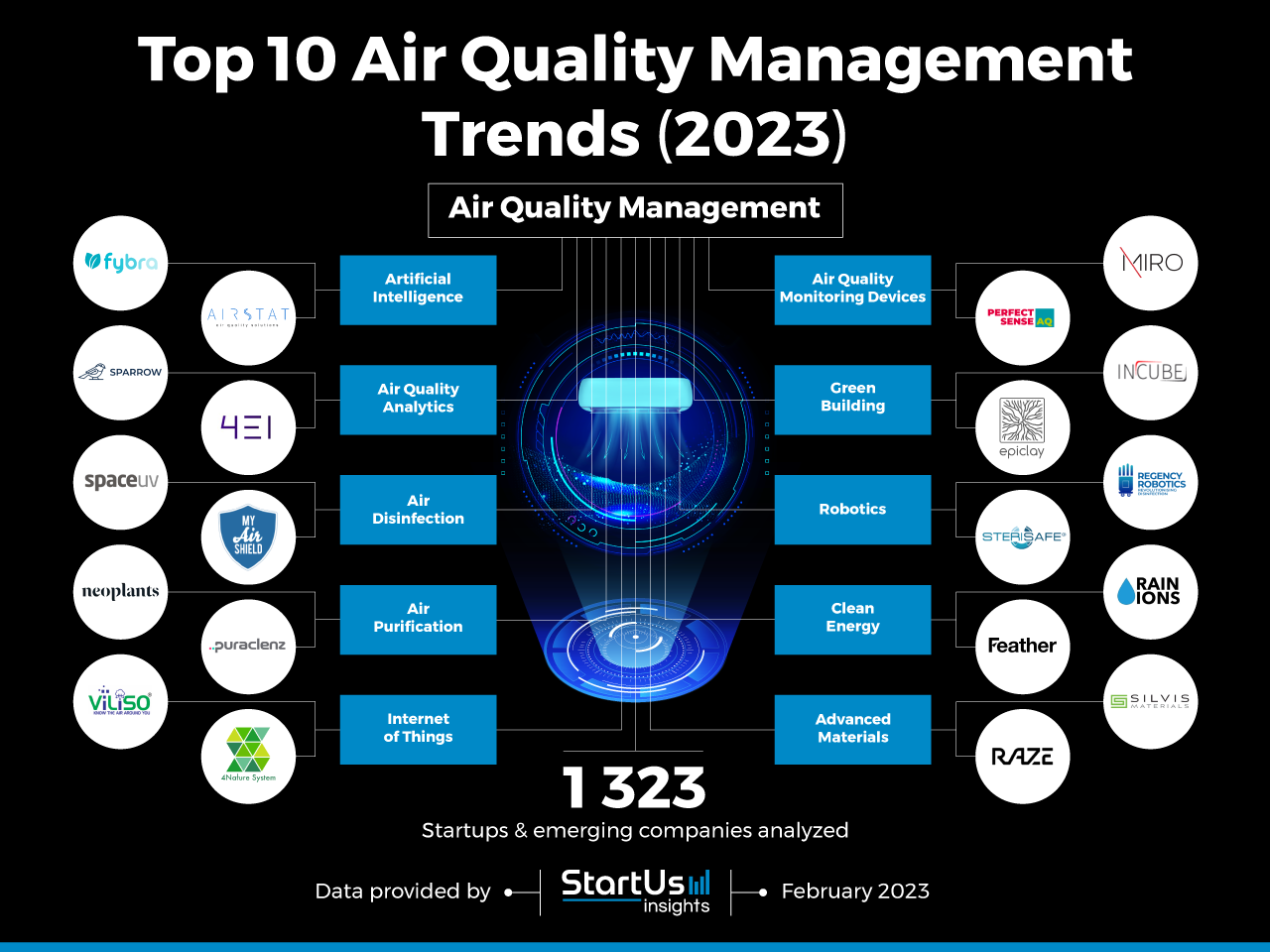
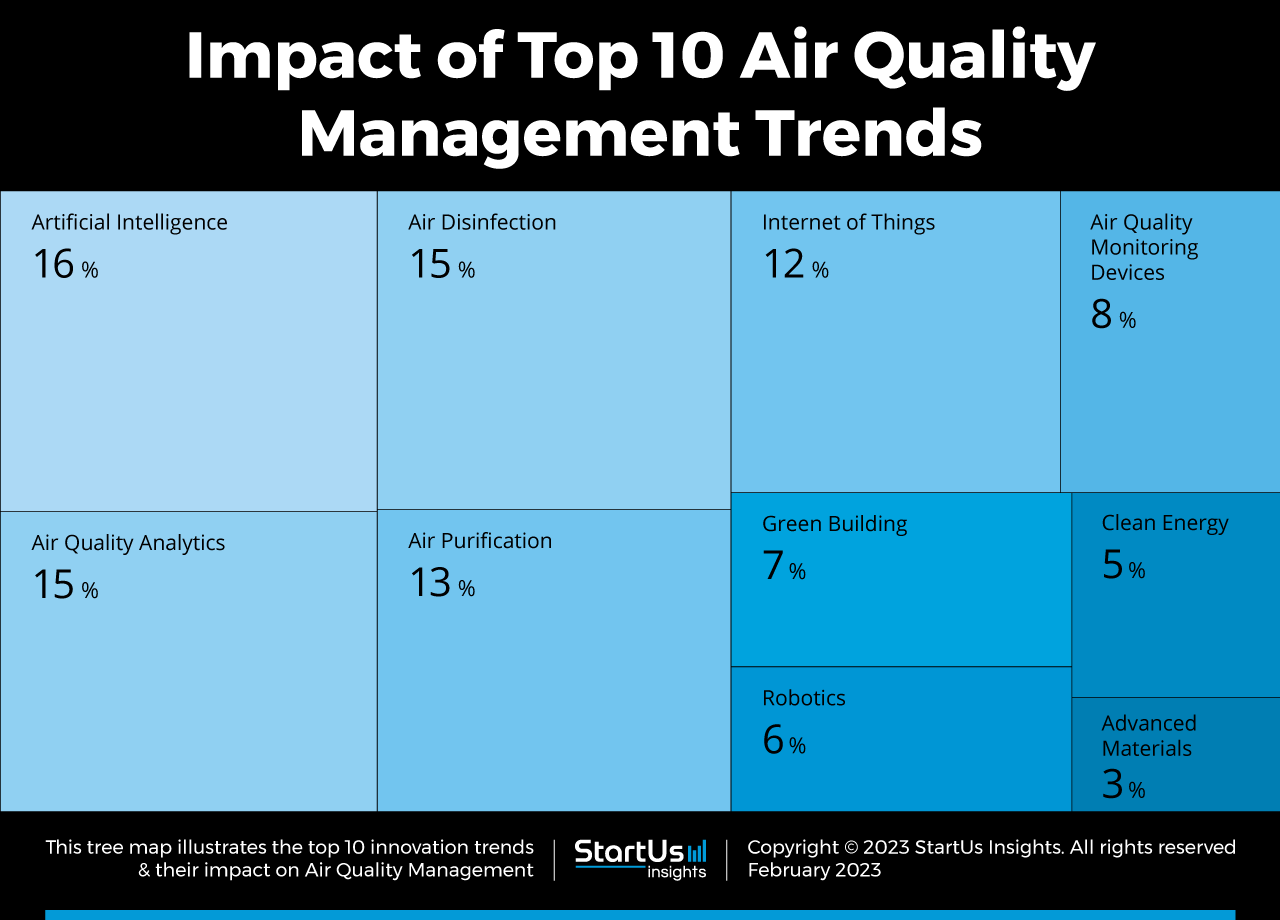
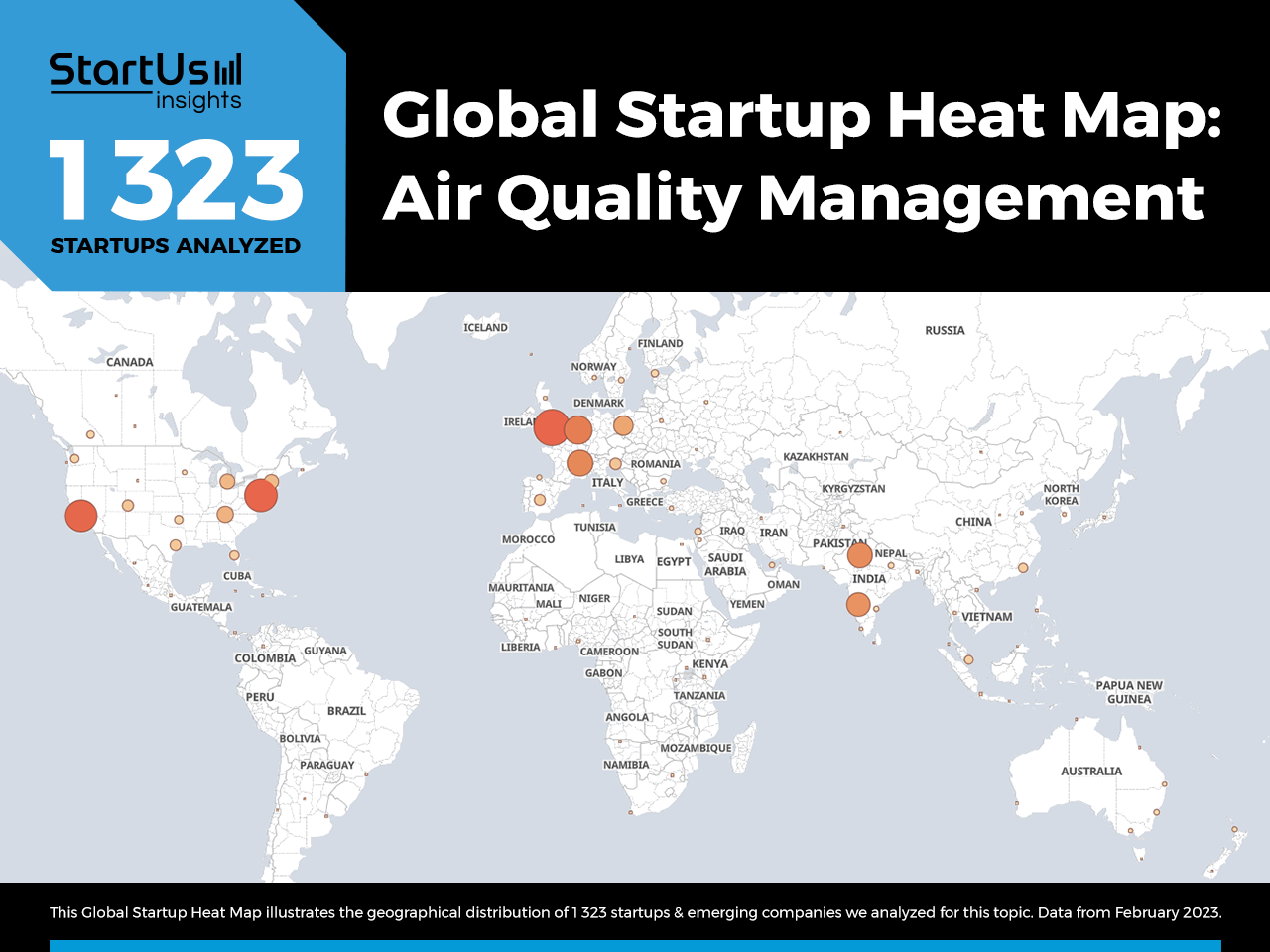
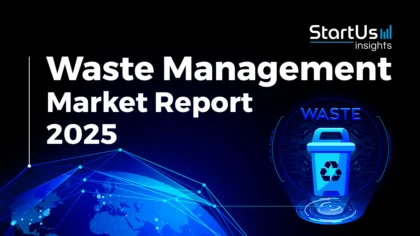
![Explore the 10 Emerging Smart City Trends [2025-2026]](https://www.startus-insights.com/wp-content/uploads/2025/06/Smart-City-Trends-SharedImg-StartUs-Insights-noresize-420x236.webp)




